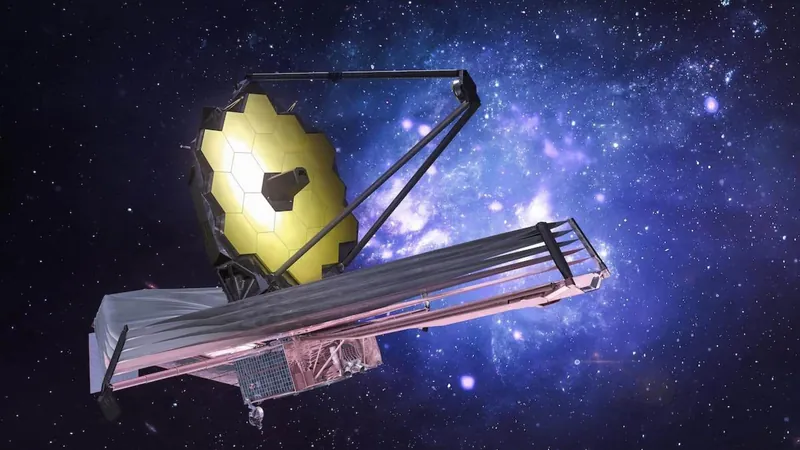
James Webb Space Telescope's Game-Changing Technique Could Unveil Water-Rich Exoplanets!
2024-11-16
Author: Wei
Uncovering the Hidden History of Exoplanets
Scientists have hypothesized that many exoplanets may feature cooled lava formations that bear evidence of previous volcanic activity. This aligns with our observations of volcanic activity within our own solar system, seen on planets like Mercury, Mars, and even on Jupiter's moon Io. A dedicated group of researchers has created a comprehensive database that showcases how particular minerals within these cooled lava formations could be identifiable through JWST’s powerful instruments.
The Dominance of Basalt in Our Cosmic Neighborhood
The researchers have honed in on basalt, a dark and fine-grained rock prevalent throughout the galaxy. Esteban Gazel, an engineer at Cornell University and a pivotal figure in the study, states, "We know that the majority of exoplanets will produce basalts." Understanding the geological makeup of these rocks could bridge crucial insights into what these exoplanets are composed of and whether they could harbor water.
Tapping into the Secrets of Water Formation
When basalt is analyzed, scientists can uncover the origins and formations of these rocks, often influenced by the presence of liquid water. Studies have shown that when water interacts with cooling lava – flowing over its surface or seeping through cracks – it can foster the development of minerals like amphibole or serpentine. These components emit energy at specific wavelengths detectable by JWST, offering a tantalizing glimpse into the planets' histories.
Spectral Insights from the James Webb Space Telescope
The JWST's capacity to measure light spectra emitted by these distant worlds can lead astronomers to deduce their elemental compositions. As Gazel explains, "We're testing basaltic materials here on Earth to eventually elucidate the composition of exoplanets through the James Webb Space Telescope data." Researchers interrogate a variety of basalt samples, each representing distinct environments to build a robust data set.
Simulated Insights from the Exoplanet LHS 3844b
One remarkable application of this methodology was demonstrated through computer simulations run on LHS 3844b, a rocky planet about 48 light-years away. Using JWST's Mid-Infrared Instrument (MIRI), scientists were able to operationalize their basalt data to predict the spectral signatures that may arise from this distant world. By closely studying the minute differences in the basalt's spectra, the research team aims to determine whether LHS 3844b was ever graced by the presence of water on its surface or in its depths.
What This Means for the Search for Life
As JWST continues to probe the cosmos, the confluence of basalt analysis and spectral data may soon revolutionize our understanding of exoplanets. These advances not only enhance our potential to identify water-rich environments but could also bring us closer to answering the age-old question: Are we alone in the universe? Keep your eyes to the skies – the revolutionary discoveries of tomorrow may hinge on the volcanic history of distant worlds!



 Brasil (PT)
Brasil (PT)
 Canada (EN)
Canada (EN)
 Chile (ES)
Chile (ES)
 España (ES)
España (ES)
 France (FR)
France (FR)
 Hong Kong (EN)
Hong Kong (EN)
 Italia (IT)
Italia (IT)
 日本 (JA)
日本 (JA)
 Magyarország (HU)
Magyarország (HU)
 Norge (NO)
Norge (NO)
 Polska (PL)
Polska (PL)
 Schweiz (DE)
Schweiz (DE)
 Singapore (EN)
Singapore (EN)
 Sverige (SV)
Sverige (SV)
 Suomi (FI)
Suomi (FI)
 Türkiye (TR)
Türkiye (TR)